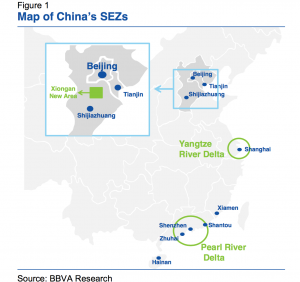Xia Le and Carlos Casanova: Xiongan New Area Announced
2017-04-07 IMI In sum, the announcement of the establishment of a new SEZ in Xiongan has important implications as it would, on the international front, facilitate a shift up global value chains, while domestically, it prevents the North from lagging too far behind other powerhouses in the South, reducing regional disparities.
In sum, the announcement of the establishment of a new SEZ in Xiongan has important implications as it would, on the international front, facilitate a shift up global value chains, while domestically, it prevents the North from lagging too far behind other powerhouses in the South, reducing regional disparities.
